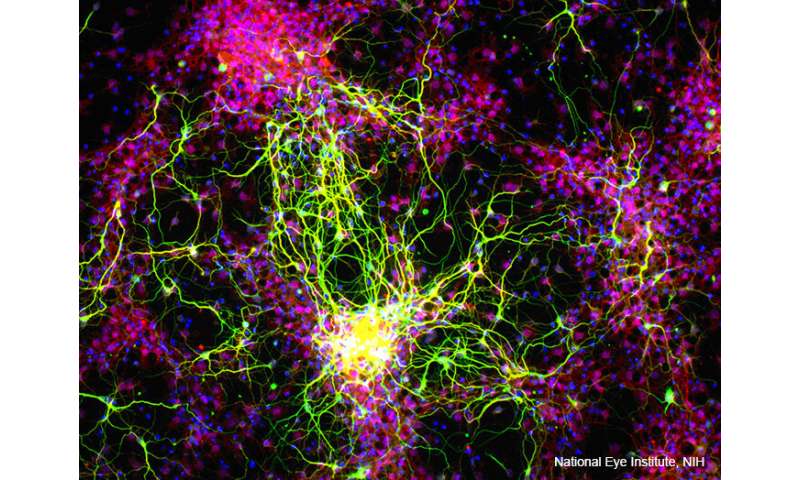Study finds novel mechanism that may confer protection against glaucoma


A team of researchers from LSU Health New Orleans Neuroscience Center of Excellence and the University of Copenhagen provides the first evidence that patients with ocular hypertension may exhibit superior antioxidant protection that promotes resistance to the elevated intraocular pressure associated with glaucoma. Their findings are published online in the Journal of Clinical Medicine, available here.
In general, glaucoma patients are vulnerable to increased intraocular pressure. However, a particular group of patients has no glaucomatous neurodegeneration despite high intraocular pressure—patients with ocular hypertension.
The paper reports the discovery of a new mechanism to explain why patients with ocular hypertension do not have glaucoma. This is the first study evaluating oxidative stress and antioxidative agents in patients with normal-tension glaucoma and ocular hypertension during oxygen stress.
According to the American Academy of Ophthalmology, ocular hypertension is when the pressure inside the eye (intraocular pressure or IOP) is higher than normal.
The authors found that patients with ocular hypertension have increased antioxidant capacity and higher levels of anti-inflammatory, omega-3 derived chemical messengers involved in sustaining cell function in their plasma compared to patients with normal-tension glaucoma and age-matched controls. The abundance of these omega-3 fatty acid chemical messengers provides antioxidant defense, and as a consequence, potential resistance to elevated intraocular pressure and glaucomatous neurodegeneration by eliminating increases in systemic oxidative stress.
“The study opens avenues of therapeutic exploration highlighting the significance of the omega-3 fatty acid chemical messengers’ antioxidant capacity as a potential diagnostic biomarker and as a novel treatment to prevent glaucomatous neurodegeneration,” notes Dr. Nicolas G. Bazan, Boyd Professor, Ernest C. and Ivette C. Villere Chair of Retinal Degeneration, and Director of the Neuroscience Center of Excellence at LSU Health New Orleans School of Medicine.
Glaucoma is the most common cause of irreversible blindness. The sight-threatening disease is defined by a progressive loss of the innermost retinal neurons with corresponding visual field losses. Despite current treatments to lower the intraocular pressure, 15% of glaucoma patients go blind, and as many as 42% will lose sight in one eye.
The study is a result of a collaboration between Dr. Bazan and Professor in Translational Eye Research, Chief Physician, and Glaucoma Specialist at the Copenhagen University Hospital, Dr. Miriam Kolko. Their collaboration began many years ago when, as a medical student from Denmark, Dr. Kolko worked with Bazan at LSU Health New Orleans.
“I began developing my interests in neuroprotection and ophthalmology working under Nicolas Bazan, who mentored, motivated and guided me, as a medical school student from Denmark supported by a Fulbright Scholarship (1994-1996), and from 2000-2003,” says Dr. Kolko.” I was lucky to work with and be inspired by Dr. Nicolas Bazan. Later, he also became my Ph.D. thesis director.”
Source: Read Full Article